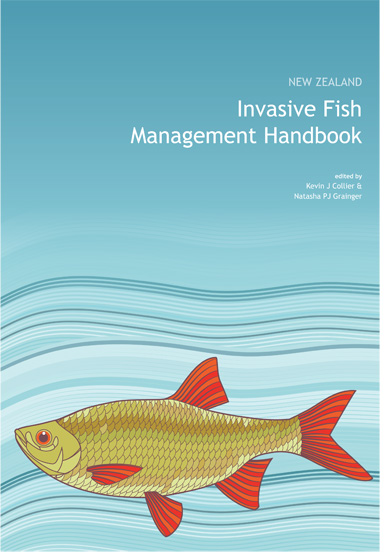Download the publication
New Zealand invasive fish management handbook 2015 (PDF, 9,120K)
Summary
The handbook covers:
- the impacts of key invasive fish
- the statutory responsibilities of different agencies
- approaches to control, eradication and surveillance, and
- ways to assess invasion risk including an analysis of human perceptions and awareness.
Invasive fish pose a major threat to the health and integrity of freshwater ecosystems globally. By definition, they reproduce and disperse rapidly, are capable of tolerating a wide range of environmental conditions, and quickly reach very high numbers often dominating the biomass of fish present.
Through their feeding and other activities they can adversely affect water quality and native species, contributing to the degraded and depauperate state of freshwater ecosystems.
New Zealand has not escaped this plight, with several introduced fish now widespread around the country, particularly in northern New Zealand.
Managing and monitoring invasive freshwater fish is a challenge that requires involvement of multiple agencies and use of multiple tools for control, eradication and surveillance.
This handbook represents a joint initiative between DOC and The University of Waikato’s Lake Ecosystem Restoration New Zealand (LERNZ) research programme, part of which focussed on invasive fish management.
It provides a key reference for those involved in invasive fish management, as well as a resource for policy makers, students and interested public.
